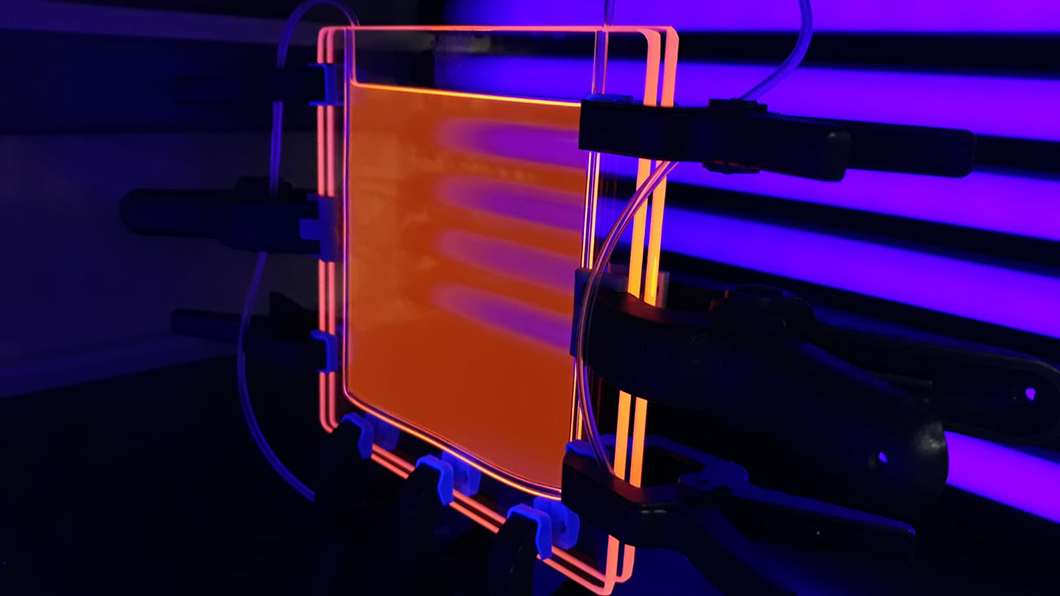
Production of a solar concentrator
Source: BAM division Biophotonics and division Surface Analysis and Interfacial Chemistry
Increasing concerns about global warming is pushing advancements in sustainable, eco-friendly, and efficient power technologies like photovoltaics (PV). To decrease the costs and increase the usage area of silicon-based PV cells, the luminescent solar concentrators (LSC) technology was developed. A typical LSC is based on a semi-transparent optical waveguide in which chromophores are embedded, that absorb direct and diffuse sunlight and re-emit it at longer wavelengths in the form of photoluminescence. The re-emitted light is guided by total internal reflection to the edges of the device, where it is then converted into electricity by small PV cells attached along the perimeter. Thereby, the amount of costly PV material is reduced, production costs are lowed, and the energy conversion efficiency is enhanced due to the larger active area of the solar cells. Also, such LSCs can be integrated into window facades and roof tops, increasing the usable space for PV solar cells.
Recently, inorganic semiconductor quantum dots (QDs) with size-dependent optical properties have emerged as a new material class for LSC technology that outperform previously used organic dyes. Beneficial are their broad absorption spectra, high molar absorption coefficients, emission in a spectral window where PV cells have an optimum energy conversion efficiency, high photoluminescence efficiencies (quantum yields), and high photochemical stability. Though binary QDs made from group II/VI and IV-VI elements have found several applications in LSC and solar cells, restriction imposed by the European union on the usage of hazardous elements like cadmium and lead triggered the search for more eco-friendly QDs. Interesting alternatives are ternary CuInS2 (CIS) and AgInS2 (AIS) QDs that have very broad emission spectra in the visible and near-infrared (NIR), show high photoluminescence efficiencies, and can be made in water in a high quality.
Aiming at the green fabrication of efficient LSC, we developed a simple microwave-assisted synthesis of highly emissive AIS QDs passivated with a ZnS shell and stabilized with hydrophilic thiol ligands. After exchanging the hydrophilic for hydrophobic ligands, these AIS/ZnS QDs were embedded in polylaurylmethacrylate by a simple photopolymerization. The resulting devices show photoluminescence efficiencies of 60 %, optical power efficiencies of 3.6-3.8 % and optical quantum efficiencies of 24.1-27.4%, which are amongst the highest values yet reported.
Efficient Luminescent Solar Concentrators Based on Environmentally Friendly Cd-Free Ternary AIS/ZnS Quantum Dots
Lorena Dhamo, F. Carulli, Philip Nickl, Karl David Wegner, Vasile-Dan Hodoroaba, Christian Würth, S. Brovelli, Ute Resch-Genger
published in Advanced Optical Materials, article no. 2100587, 2021
BAM division Biophotonics and division Surface Analysis and Interfacial Chemistry


